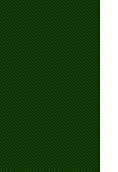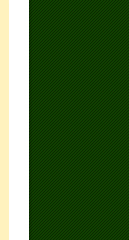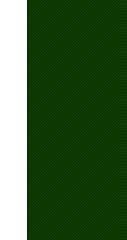|
|
|
Shrubs
Black Chokeberry Attractive white flowers, glossy foliage and black berries. Edible fruit attracts birds. Excellent fall color.
Buffaloberry - Native. Suckers to form colony. Drought tolerant. Attractive silver leaves. Red fruit can be used for jelly.
Caragana Drought hardy, fine leafed, yellow flowers, non-edible pods.
Cherry, Nanking Showy flowers and sweet red fruit. Good for jelly. Good for wildlife.
Cherry, Mongolian Glossy leaves. Showy white flowers and tart red fruit. Excellent for jelly.
Chokecherry White flowers, blooms late April, fruits used in jams.
Cotoneaster Glossy green leaves, non-edible fruit, ideal for hedges
Cranberry, Highbush Attractive white flowers and red fruit. Excellent fall color. Fruit could be used for jelly. Prefers moist soil
Current, Amercian Black Grows in flood plains and occasionally in open area. Edible fruits used by birds & animals.
Dogwood, Red stemmed Provides good winter color, tolerate wetter soils, white flowers.
False Indigo Native shrub, purple flowers, grows in wetter soils, bears fruit.
Honeysuckle Fragrant white, pink or red flowers. Inedible red or orange fruit attracts birds.
Juneberry Native shrub, white flowers, edible blueberry like fruit
Lilac, Common Dense suckering growth, white to mostly purple flowers
Lilac, Villosa Non-suckering, rosy-lilac to white flowers are larger than common lilac
Nannyberry, Viburnum Native, shiny leaves, white flowers followed by black fruit. Excellent fall color. Can be trained to a single-stemmed small tree.
Plum , American Native shrub, fast growing, white flowers in spring. Edible fruit makes good jam.
Rose, Hansen Hedge Fragrant pink flowers in June, bright red-orange fruit in fall attracts wildlife. Thorns, suckering plant
Sumac, Smooth Native, suckers to form colony, excellent red fall color, red seed-heads add winter interest. Moderate drought tolerant
Willow , Sandbar Ideal for moist soils, bark reddish-brown turning gray
Medium Trees
Apricot Early flowering, some trees produce edible fruit
Chokecherry, Amur Mid-May white flowers, dense branching tree, orange bark
Crabapple, Midwest White fragrant flowers, bright red or yellow fruit
Hawthorn White flowers followed by reddish fruit in late summer
Maple, Amur Brilliant red fall color, commonly called ginnala maple. Prefers moist well-drained soil.
Pear, Harbin Hardy slow growing tree, does well in droughty soils
Willow , Laurel Leaf Beautiful glossy green leaves, does well in wetter soils
Large Trees
Ash, Green Native, fast-growing. Yellow fall color
Cherry, Black Native in Eastern US forests. Fast growing tree produces attractive white flowers and dark fruit. Fruit makes syrup and drinks.
Cottonwood , Seedless Fast growing. Cottonless. Needs moist, well-drained soil for best growth
Hackberry Hardy, good shade tree, drought tolerant
Honeylocust Fine lacey looking leaves, may produce long brown seed pods. May produce thorns. Tough and adaptable
Linden , Little Leaf Pyramidal growth habit. Attractive white flowers in June. Prefers moist well-drained soils
Maple, Silver Fast growing, yellow fall color, brittle wood. Prefers moist soil
Maple, Sugar Native to NE SD. Brilliant red, yellow and orange fall color. Excellent shade tree.
Oak, Bur Native. Extremely tough, drought tolerant tree. Long-lived. Acorns provide wildlife food.
Walnut, Black Native in SE SD. Valuable lumber tree Edible nuts. Attracts wildlife. Grows best in deep, moist soils.
Willow , Golden Fast growing. Tolerates wet sites. Not drought tolerant. Attractive golden-orange bark adds winter interest.
Conifers
Pine, Austrian Slower growing than other pines, stiff needles
Pine, Ponderosa Native. Fast-growing once established. Good wildlife plant. Drought tolerant (intolerant of wet soils)
Pine, Scotch Attractive peeling orange bark on older trees. Drought tolerant. Popular Christmas tree. Fast growing.
Red Cedar, Eastern Medium Conifer. Native. Very drought tolerant. Has reddish brown to purple winter color. Excellent for wildlife
Spruce, Black Hills SD State tree. Very ornamental. Dense growth habit. Drought and alkaline tolerant. Cones attract songbirds.
Spruce, Colorado Blue Native in Rocky Mountain states. Needles blue or green. Very ornamental.
Spruce , Norway Native to Europe. Green needles. Large cones, ascending branches with drooping branches.
Spruce, Meyer -Very similar to Colorado Spruce but with more consistently blue needles. Needles not as stiff and sharp.
To learn more about the trees/shrubs please go to the North Dakota Tree Handbook web site.
|
|










